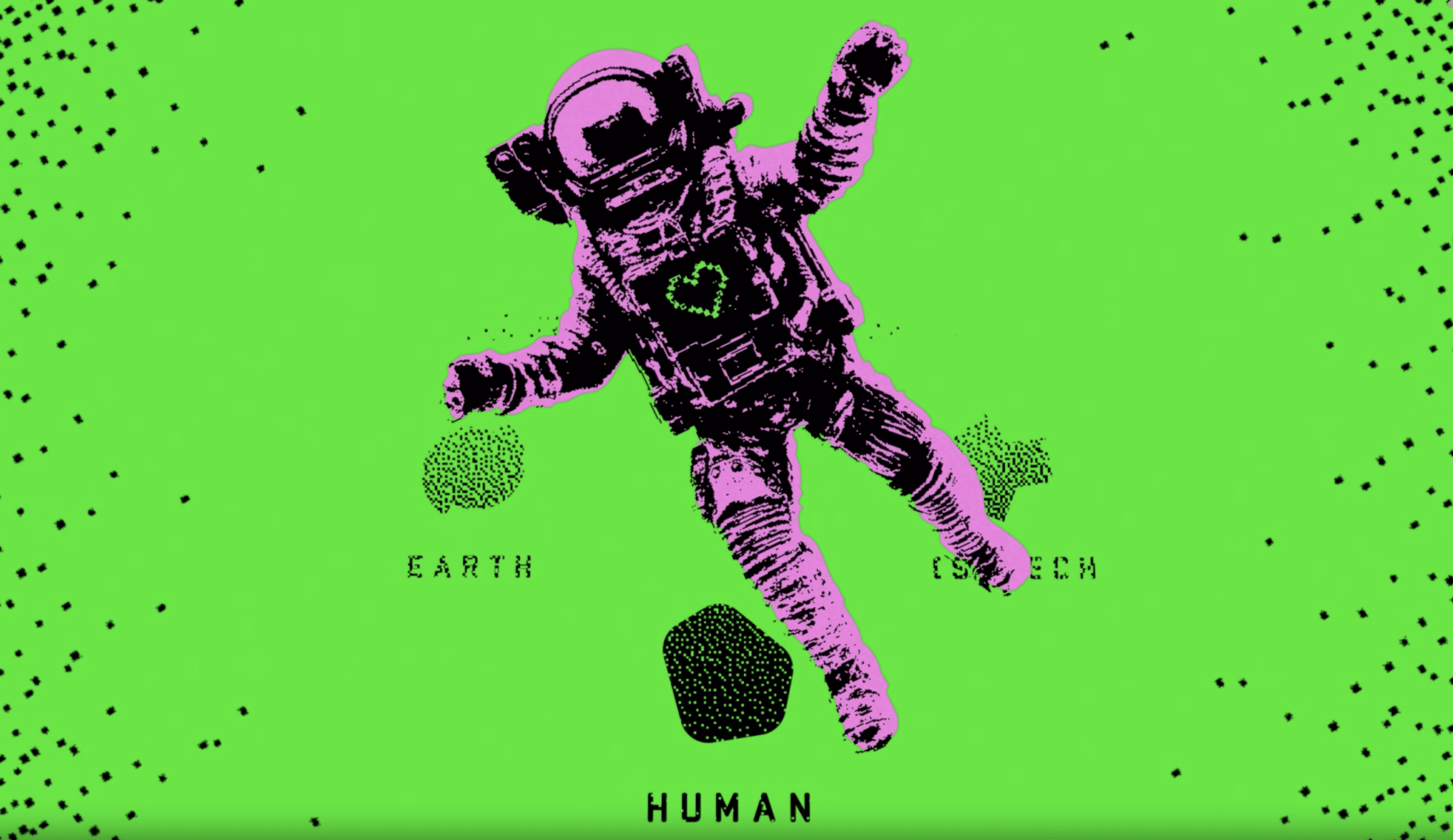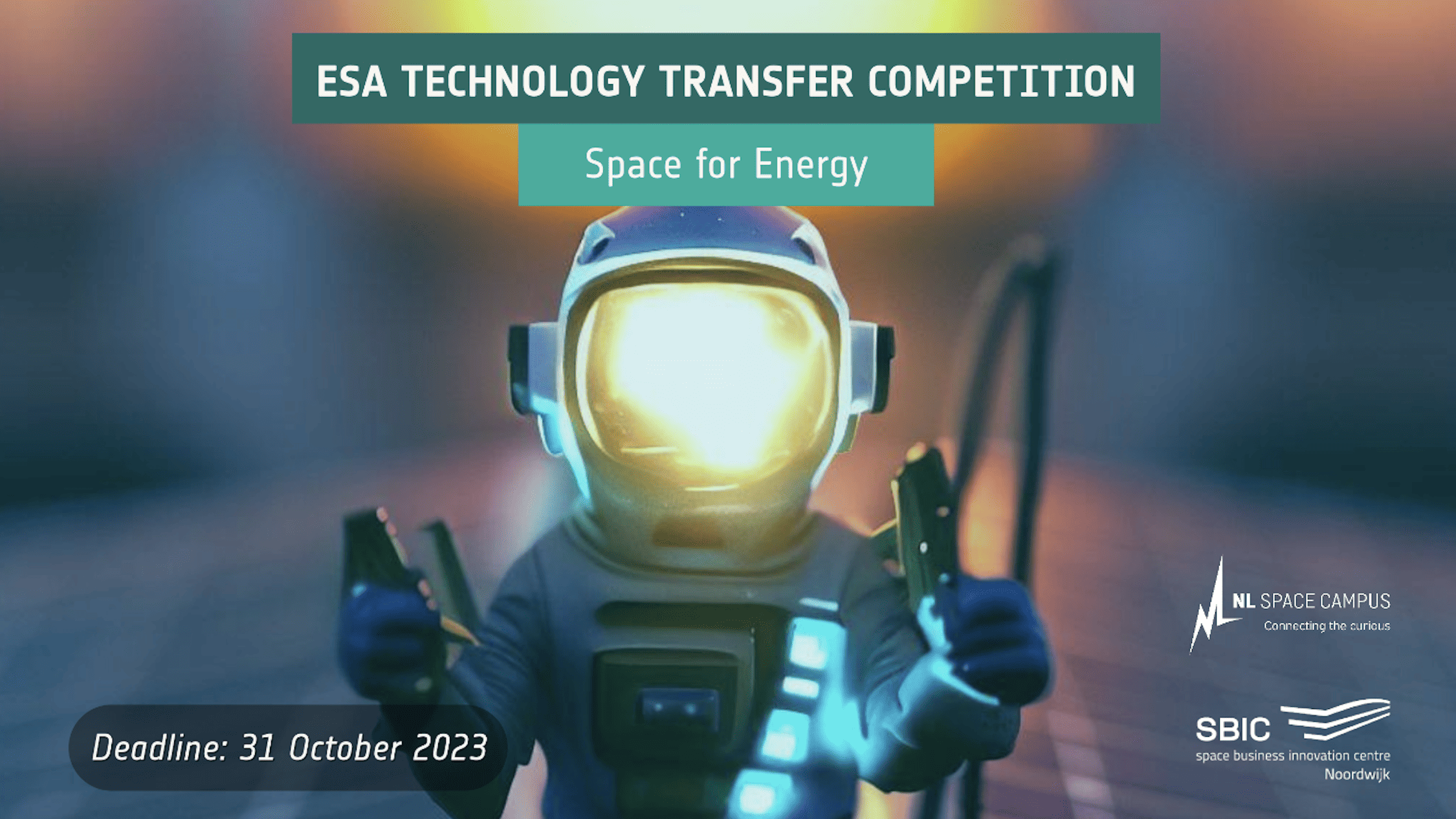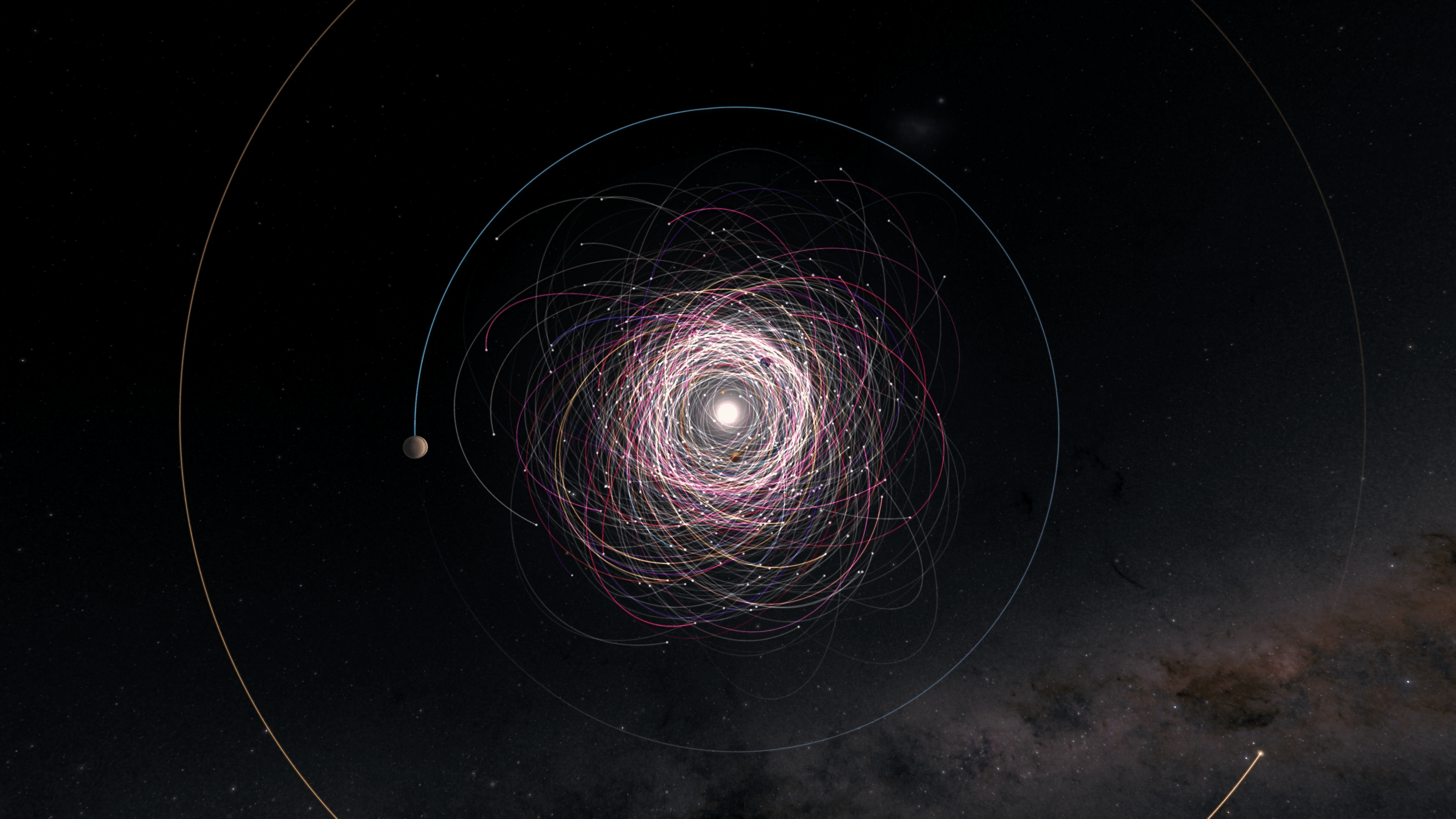
The Space Week had barely begun when, on Sunday morning, all eyes were already entirely pointed to the next edition. For as much as there is to experience this week, the 2024 edition promises to be even bigger. Even the well-attended NL Space Tent, the temporary pavilion where the Dutch space sector presented itself to the public on Sunday, emptied itself for a moment for astronaut André Kuipers’ announcement of what will happen next year. Most notably, the annual worldwide congress of the Association of Space Explorers (ASE) – better known as the astronaut congress – will visit Noordwijk from late September to early October.
In the run-up to that congress, Kuipers and the NL Moonshots ’24 team want to get about a hundred student teams – made up of students from all levels and backgrounds – to work on pressing issues that could be helped with space knowledge. His appeal last Sunday immediately yielded the first applications from student teams that were interested in such a Moonshot. The fact that real astronauts are supporting them in their quest will undoubtedly have helped.
André Kuipers’ announcement was part of a day full of information about all the beautiful things that space travel has brought us in recent years. Many workshops and speakers – as always during the ESA-ESTEC open days – focused on what can be added to that in the coming years. This requires more people who want to immerse themselves in the subject, so, unsurprisingly, many of the components were aimed at schoolchildren and students.
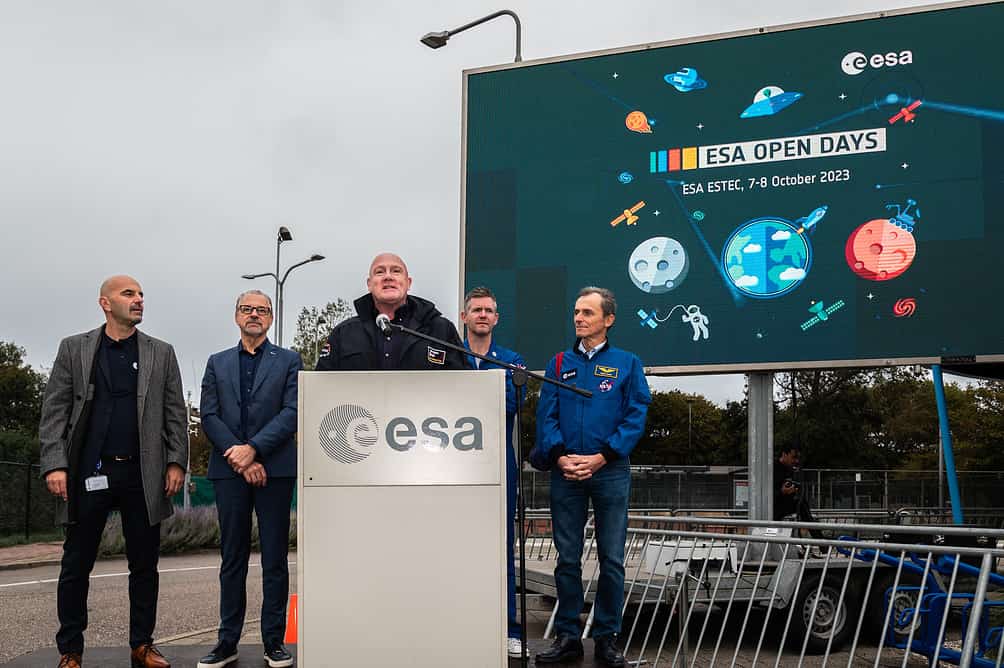
Space for everyone
“We are always pleased with the great interest of young people,” says NL Space Campus director Marc Sandelowsky. “But so are all other age groups. The Space Week is there to enthuse old and young about the achievements of space exploration. Here is – literally – ‘space’ for everyone, and the more people realize that the space cluster adds value to many sectors, the better it is.”
Sandelowsky took over the director’s baton from Esther Peters just after the first edition of The Space Week so he could build on an established event. Still, some changes are apparent this week. “They’re actually more ongoing developments than changes,” Sandelowsky says. “And most of them lie entirely with our partners in this event. Because while we as a campus may be the booster and director for many activities, it’s mostly the partners pulling it off.
The campus director points in the first place to ESA-ESTEC as co-organizer, but also to parties such as Netherlands Space Office, SpaceNed, Space Expo, SBIC, SRON, the Noordwijk municipality, province of South Holland, and the universities of Delft and Leiden. In part, this is also visible in the locations of The Space Week. Although NL Space Campus in Noordwijk is the logical center of all activities, several additional locations are now associated with the event. Like last year, the city of Leiden is part of the program, but this year, activities in Amsterdam, Delft, and The Hague were added.
Best kept secret
“For years, we were the best-kept secret in the Netherlands,” says Anja Appelt, ESTEC Site Coordination Officer, also speaking on behalf of director Dietmar Pilz. “But because of all the collaborations we have set up from here over the years, thankfully, that is no longer the case. That would no longer be justified with 3,000 employees and 120,000 visitors annually. ESA-ESTEC is Europe’s largest space test center, and we always want to radiate that during our open days.”
From Noordwijk, new space missions are developed, satellites are tested, and plans are made for European space travel. “On our open day, for example, we have shown the Hera satellite. It will go into space next year and aims to protect us from incoming asteroids in the future. In this way, we can make the importance of space travel very clear to our visitors.”
Space Expo
As always, an important part of the activities during The Space Week takes place in and around Space Expo, not for nothing the Space Museum of the Netherlands. “This is where knowledge, information, and education come together,” says director Barbara Hoppel. “We focus on history, the present, and the future. Our biggest target group is families with children and people getting acquainted with space travel for the first time. We also host a lot of school classes and space professionals. We strive to be the showcase of the Dutch space industry, the catalyst of new activity. In this way, we can also give an impetus to the development of the campus itself.”
Sunday was more than just a successful open house for Hoppel; it was also the opening of the new exhibition “Earth from Space,” which the museum co-curated with ESA. “In this interactive experience, you see the Earth as you’ve never seen it before: through the eyes of satellites. Use real satellite data to examine changes in land, water, ice, and air projected on a large globe. Zoom in with our touch table. What would this land look like if there were no dikes? Or if sea levels were rising? Needless to say, that exhibition is still open to visit after this week.”
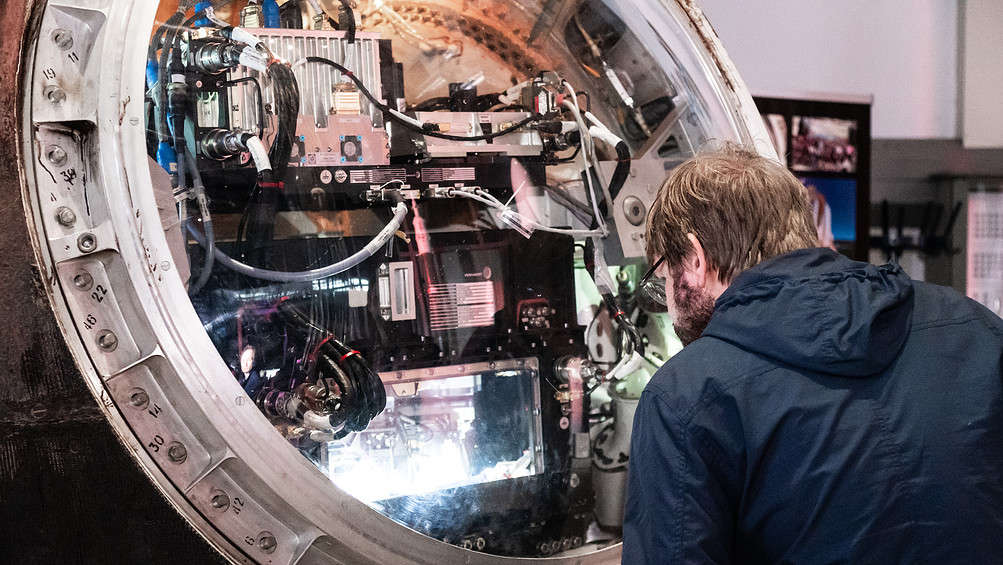
One Space Hub
One of the newcomers is TU Delft, which has nestled itself into the program at various times. It’s logical, too, given the university’s focus on space exploration. “You can also see that in the growing student numbers,” says Laura ten Bloemendal. “Again, we welcomed over 140 new first-year space students this year.” While that’s good news for the industry, Ten Bloemendal’s focus during The Space Week is on getting even more young people excited about space. “We want to show that space is there for everyone. To that end, we have our courses and an Aerospace Innovation Hub, where companies arise that process space technologies into applications on Earth.”
It is a role of the university that remains somewhat underexposed, Ten Bloemendal says. “In our research, we are super specific, but only thanks to a strong entrepreneurship base can valuable applications emerge from that. With challenges from industry and a voucher program for start-ups, we bring those worlds together.” Therefore, the connection with the Dutch Space community is not limited to The Space Week. For example, the One Space Hub has quickly become an established force within the ecosystem. With financial support from RVO, this two-year project focuses on strengthening entrepreneurship within the space sector. Several knowledge institutions and other organizations, including NL Space Campus, from across the country are involved.
Business impact
This week, the campus is trying to focus on business effects: space travel’s economic and social impact. Sandelowsky: “As a campus, we have a more business-oriented objective. We are not there for the general public; those other parties are much better at reaching them. Take Space Expo, the knowledge institutions, and all the other associations for that purpose. Our campus partners especially want to know about Space’s impact on our economy. Hence, what we do this week has to have mainly a business angle; this gives others a little more room to serve their target groups.”
For Sandelowsky, The Space Week is successful “when another new group of people has started thinking about what is possible thanks to space exploration, and they start contemplating about what they, themselves, can contribute to that.” That accords well with how local and regional governments are in the game. “Demystifying space travel,” Renate Beausoleil of South Holland Province calls it. “Because 80% of the Netherlands’ space activities take place in South Holland, as a province, we also feel co-responsible for this sector. The further development of NL Space Campus is important in this regard, but so is The Space Week as an annual event.”
According to Beausoleil, this edition shows the growth in terms of cooperation. “That led us to arrive at several events jointly. On Tuesday, for example, at the Netherlands Space Office (NSO) in The Hague, NSO, NL Space Campus, Province of South Holland, and the Municipality of Noordwijk organized a meeting for local and regional authorities from South Holland, focusing in particular on municipalities, but also on environmental services and the province itself. In an interactive session with experts from Groundstation.Space and from NSO, policy staff and data scientists were able to make concrete plans for using satellite data in policy issues at the local and regional levels. For example, consider measuring heat stress in urban areas and measuring subsidence for managing underground infrastructure, such as sewers and gas and water pipes. That was a great afternoon!”
Methane concentrations
NSO’s Coco Antonissen can only agree. “That afternoon showed the practical usefulness of the satellite data we have at our disposal that anyone can use. For local governments, for example, it’s about vegetation in dune areas or detecting environmental crime around the earth. Sometimes, the data are processed and analyzed by governments, but the industry is also involved. Anyone can use the satellite data from the satellite data portal. Companies often develop smart applications that help governments solve social issues.”
Those applications can now also be found at the Netherlands Institute for Space Research (SRON). Erik Arends proudly points to the weekly refreshed global map of methane concentrations. “Companies often do not know it, and on the ground, it is also not observable, but from space, you can see the biggest methane leaks and have an overview of the whole earth. In the fight against climate change, that is precious information.” In fact, it’s all so valuable that SRON is now working with the United Nations to set up a mechanism to hold companies and governments accountable in case of leaks. It is a relatively new role that Arends proudly told about during the open days in Groningen and Leiden. “Traditionally, we have always been more concerned with the universe than the Earth, but nowadays, that is more balanced. You could say that SRON is exactly in between the two. Our two flagships reflect that: first of all, the Tropomi, the Dutch satellite instrument aboard the ESA Sentinel-5 Precursor. But in addition, we are already working hard on the Athena X-ray telescope, which will go into space in the next decade to investigate the environment of black holes.”
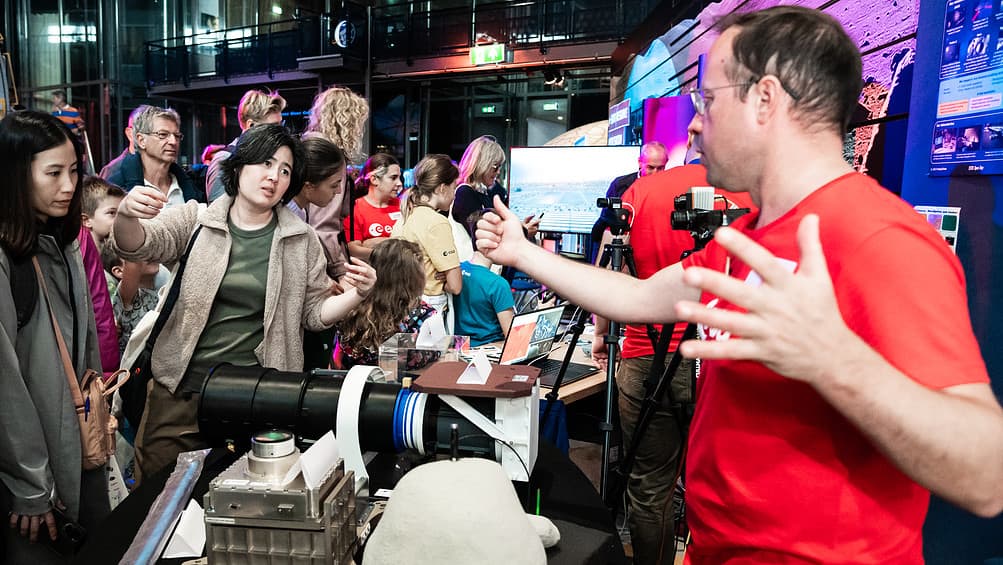
College Tour
NSO, as initiator and sponsor of the student program, also had an important role in announcing the NL Moonshots ’24 during ESA ESTEC’s open day. After the press conference, Director Harm van de Wetering, together with ESA DG Josef Aschbacher, ESTEC Director Dietmar Pilz, Mayor of Noordwijk Wendy Verkleij, student Kim Regnery and astronaut Pedro Duque, participated in a panel on reaching ‘the next space generation’. Van de Wetering: “The arrival of such a large group of astronauts is a unique opportunity to inspire the next generation to come up with ideas that we could never come up with. Who knows, maybe some of those ideas will end up as startups on the NL Space Campus.”
NSO has asked Lucien Geelhoed to develop NL Moonshots ’24 further and create a campaign to reach as many students as possible. Geelhoed was mainly involved in The Space Week last year on behalf of ‘Leiden European City of Science’; now, his focus is NL Moonshots ’24. “The kickoff Sunday was already top-notch: the College Tour with André Kuipers and Pedro Duque, the launch of Moonshots, and immediately already several student teams signed up.”
Even after this week, Geelhoed will continue putting much of his time into this project and preparing for the astronaut conference. “We want to get the next space generation involved. Under the motto ‘Generation space, shaping our future together,’ we will ensure throughout the year that all 1.3 million students in the Netherlands can find out what’s out there in space. By the way, we can’t do that only from Noordwijk, so we will engage with them all over the Netherlands.”
Inspiring and giving back
The Space Week has many participating parties, each with its own role and interpretation. But the common goal is obvious to everyone. Erik Arends (SRON) calls it an event of ‘inspiration and giving back’. “Giving back because we can do our work thanks to the society willing to put money into it; inspiration because we are convinced that our enthusiastic stories can also kindle a fire in others.” And everyone is welcome to become part of that, Marc Sandelowsky concludes. “Whether you are an individual, come with your whole family, or want to join as a company, there is something in The Space Week for everyone. And, of course, the same goes for the whole campus outside of these eight days.”
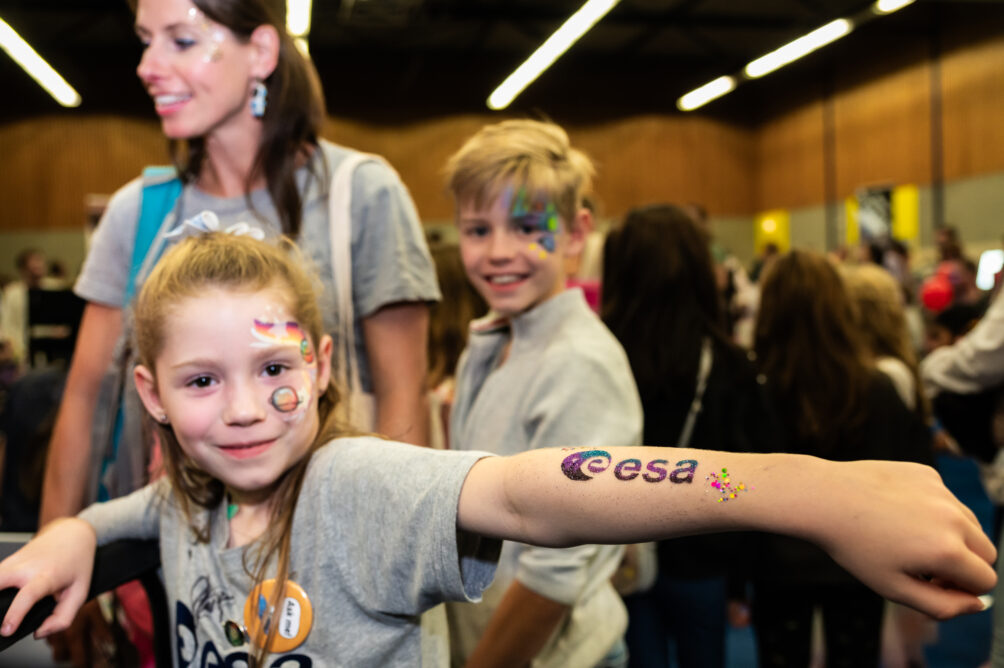
More information:
Twitter/X: @TheSpaceWeek
LinkedIn: @nl-space-campus
Instagram: @thespaceweekNL
Thespaceweek.eu


